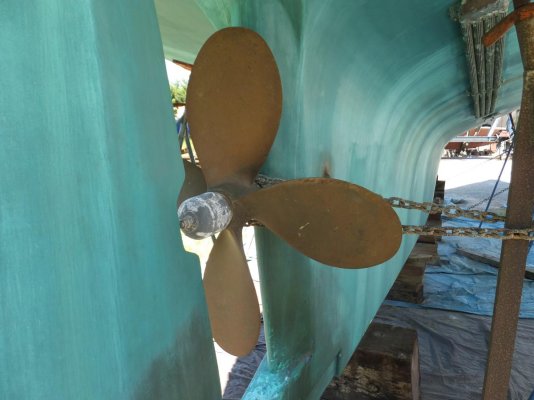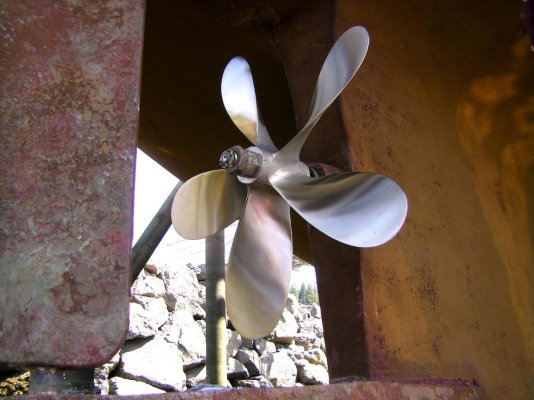Nomad Willy
Guru
I have great respect for this commenter's experience, but I'm not sure I agree with this statement. I believe you need to start with the largest diameter you can fit with a minimum of 10% standoff between propeller tip and hull - 15% is even better. If you don't have that standoff, then increasing diameter is not helpful.
Assuming you have the largest diameter propeller you can fit - then you need to look at other variables if there is some change you need to make. Frankly, I agree with the comment above that your square wheel may be an ideal compromise.
If you can run your engine up to WOT with a full load, then I'd have to ask why you think you need any changes to your setup. Is there some problem you are trying to solve or just curious?
I stand by to be corrected by those wiser than me.
Thanks,
It appears to me that the dia/pitch ratio can be more important than diameter alone. On a faster boat square props (dia and pitch the same) works well as there’s not enough time for the water to flip around the blade tip and thus change sides. And changing sides looses lots of thrust. The only prop that can do square well at trawler speeds is one w narrow skinny prop tips and more than usual # of blades. Just like on airplanes, especially gliders. Long wingspands and small wing tips wa very short chord. Higher aspect ratio wings and props.
But yes one is limited on a trawler for max dia. And w a given blade design or profile shape and number of blades one can optimize. More blades can deliver a higher aspect ratio for a given dia but the dia insribes a circle that acts much like blade area ... disc area. Just like blade area considering one blade the whole prop is limited or blessed by the disc area loading.
So for max thrust not considering speed one looks for the max dia, then an ideal blade area. That will dictate #of blades with typical prop designs .... for reasonable economy. To buy props w unusual blade shapes or aspect ratios gets expensive so usually a typical prop is used. And one chooses the #of blades to achieve the optimum blade area. And that is usually dictated by the power delivered to the shaft. Then of course there’s rpm, boat speed and some other variables. Then you look for the ideal pitch/dia ratio for the speed of the boat. Assuming a typical 8 knot trawler one would look for about 2/3 to 3/4 as much pitch as diameter. Adjusting the dia, pitch and blade area will bring one close to the bulls eye for good efficiency. Ideally no trawler should have only half as much pitch as dia. That will be good for a max bollard pull but lacking for pushing a boat w some speed on.
Here is an example of high aspect ratio 4 and 5 blade props that should be very efficient. But props like this can only be used if there’s sufficent blade swinging clearence. The 4 blade below was on a big motor sailer and the one below on my boat. But it didn’t work well at all. Too much blade area and was only able to achive 2000rpm .. needed 3000. But the reason I posted these pics is to a non-typical high aspect ratio prop. Most trawler props are fairly low aspect ratio
I have no credentials and am not a marine engineer so the above is only my opinion as is usually the case.
Attachments
Last edited:



